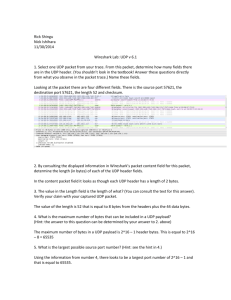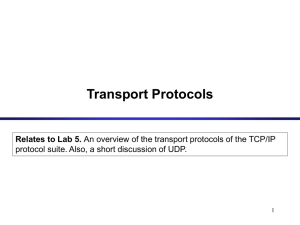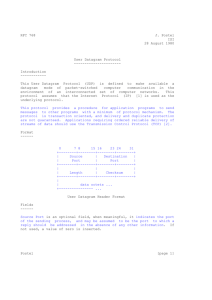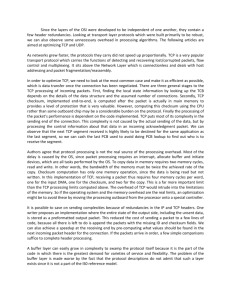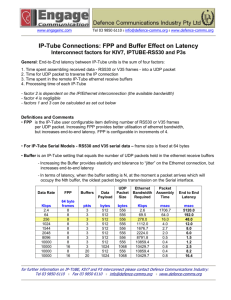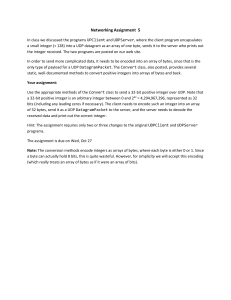Solution to Wireshark Lab: UDP
advertisement
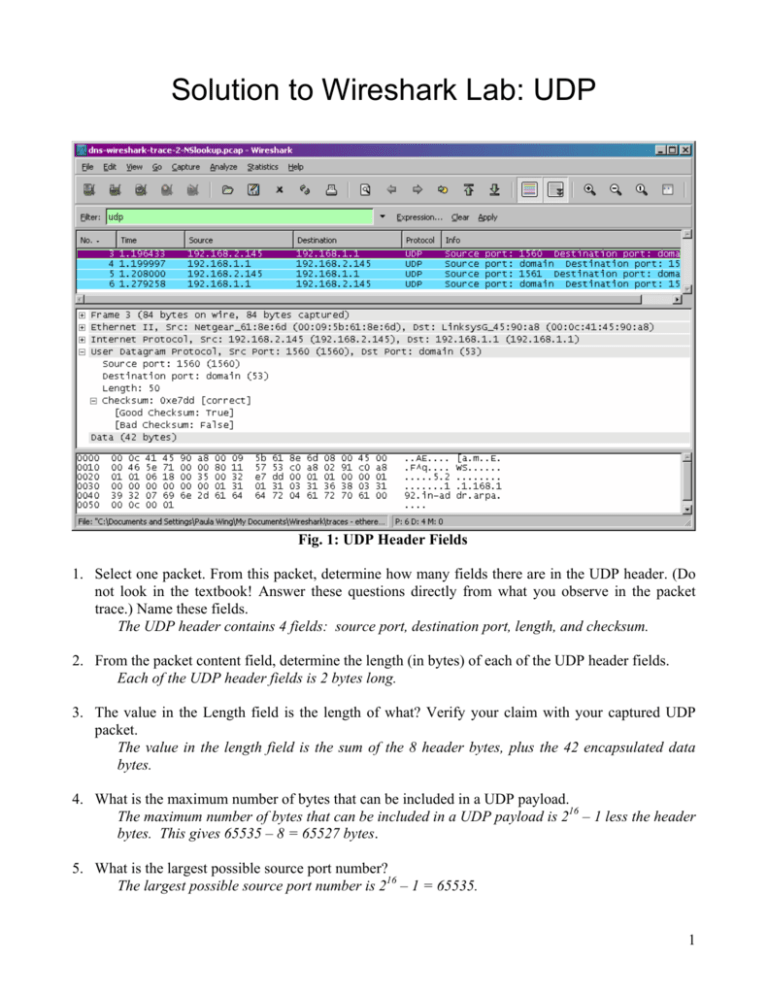
Solution to Wireshark Lab: UDP Fig. 1: UDP Header Fields 1. Select one packet. From this packet, determine how many fields there are in the UDP header. (Do not look in the textbook! Answer these questions directly from what you observe in the packet trace.) Name these fields. The UDP header contains 4 fields: source port, destination port, length, and checksum. 2. From the packet content field, determine the length (in bytes) of each of the UDP header fields. Each of the UDP header fields is 2 bytes long. 3. The value in the Length field is the length of what? Verify your claim with your captured UDP packet. The value in the length field is the sum of the 8 header bytes, plus the 42 encapsulated data bytes. 4. What is the maximum number of bytes that can be included in a UDP payload. The maximum number of bytes that can be included in a UDP payload is 216 – 1 less the header bytes. This gives 65535 – 8 = 65527 bytes. 5. What is the largest possible source port number? The largest possible source port number is 216 – 1 = 65535. 1 6. What is the protocol number for UDP? Give your answer in both hexadecimal and decimal notation. (To answer this question, you’ll need to look into the IP header.) The IP protocol number for UDP is 0x11 hex, which is 17 in decimal value. 7. Search “UDP” in Google and determine the fields over which the UDP checksum is calculated. The UDP checksum is calculated as the 16-bit one’s complement of the one’s complement sum of a pseudo header of information from the IP header, the UDP header, and the data. This is padded as needed with zero bytes at the end to make a multiple of two bytes. If the checksum is computed to be 0, it must be set to 0xFFFF 8. Examine a pair of UDP packets in which the first packet is sent by your host and the second packet is a reply to the first packet. Describe the relationship between the port numbers in the two packets. Fig. 2: UDP sent by my host Fig. 3: UDP reply to my host The source port of the UDP packet sent by the host is the same as the destination port of the reply packet, and conversely the destination port of the UDP packet sent by the host is the same as the source port of the reply packet. 2 Extra Credit Capture a small UDP packet. Manually verify the checksum in this packet. Show all work and explain all steps. Fig. 4: UDP packet for checksum calculation 3 Take the following fields from the packet containing 42 bytes of data shown in figure 4 above. All calculations are done using the hex values. Field Hex value IP header: Source IP address c0a8 … 0291 IP header: Destination IP address c0a8 … 0101 IP header: Protocol number(zero padded on left) 0011 16 bit UDP Length 0032 UDP header: source port 0618 UDP header: destination port 0035 UDP header: length 0032 UDP Data 0001 … 0100 0001 0000 0000 0000 0131 0131 0331 3638 0331 3932 0769 6e2d 6164 6472 0461 7270 6100 000c 0001 Sum all hex values 181e Carry 4 Add in the carry 1822 1s complement = checksum! E7dd 4


